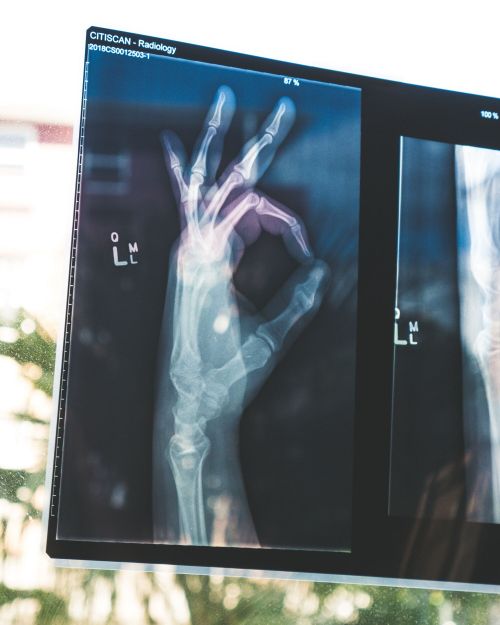Gadfly | October 16th, 2019

American Health Care—From Tropical Paradise To the Bottomless Muddy Muck
We have the best medical care in the world for the 10% who can afford it and the worst care for the bottom 90% among the Organization of Economic Cooperation and Development (OECD) industrialized nations in the world, resting in the muck at the bottom of 37 countries, the only one without universal health care. We now have 30 million people in poverty without health or dental insurance. A doctor at the UCLA School of Medicine summarized our system: “We have one healthcare system for the One Percent and another for everybody else. I call it wealthcare.” It seems we have very expensive emergency rooms for the poor without health insurance and $10,000-a-night hospital “apartments” with a wide range of amenities, including sumptuous décors, gourmet menus, decaf lattes, valet parking, and absolutely no waiting for anything. It’s called concierge care, boutique medicine, or executive care. By the way, our “best medical care in the world” as described by Republicans puts us 30th in the world for life expectancy and 28th for infant mortality. And our rich live to be 95 on average and our poor die at 63.
An article by Pamela Herd and Daniel P. Moynihan, two Georgetown University professors of public policy, recently wrote an article “How To Straighten Out The Medicare Maze.” It emphasizes the difference between U.S. “fee” medicine and (OECD) universal care medicine. The couple probably makes enough money to be in the top 20%. They write: “As parents of a child with a disability caused by a rare genetic syndrome, we’ve wasted hundreds of hours sorting out enrollment choices, completing unending forms and engaging in maddeningly repetitive conversations, all to ensure that our daughter receives the care she needs and that we don’t get stuck with financially devastating bills.”
They spent a year teaching at Oxford University in Britain, so they enrolled in the British National Health Service. Yes, that’s the one Republicans opposing universal single-payer care always scream about: “You have to wait forever for service!”
They write: “We found a system that did not demand an expertise in navigating hospital bureaucracies. After ten minutes filling out a few simple forms, we enrolled our daughter. Within two days she had an appointment and a filled prescription for medicine, which was free. We had anticipated the financial relief that can come from a single-payer system, but not the administrative relief. It never occurred to us it could be so different.” American medical facilities spend an average of eight percent on administration; Great Britain one percent.
Greed Has Overwhelmed Our Health Care Non-System
I recently had my right hip replaced at Sanford, six years after replacing the left one. Some day when I have some time I’m going to add up the costs from Medicare and private supplementary insurance for both from files. I bet my new one will run about $60,000 with associated costs, but every once in a while I get another bill. According to an international study in 2018 the U.S. led the world for hip replacement costs at $40,000, with other selected countries: Israel-$36,000, South Korea-$21,000,Thailand-$17,000.Mexico-$13,500,India-$7,200, and Poland-$5,500.
The John Hopkins Bloomberg School of Public Health has researched health care costs around the world and has found that the United States does not have greater health care utilization. It simply has much higher prices. (It takes a couple of years to assemble prices from around the world, so these figures are from 2016.) The U.S. spends $9,892 per capita (although 30 million people, or 9%, have no health insurance) while 10 other high-income countries (Canada, Germany, Australia, the United Kingdom, Japan, Sweden, France, The Netherlands, Switzerland, and Denmark) spent less than half that for universal coverage. We spent 17.8 percent of our Gross Domestic Product (GDP) on health care while the ten averaged 11.5% of GDP. Switzerland was second at $7,919, Canada at $4,753, while the average OECD cost was $4,033.
Uwe Reinhardt, the famous Princeton University healthcare economist, put our high GDP ratio in a blunt perspective: “It’s not the great health we produce, it’s the prices, stupid, why the United States is so different from other countries.” Some economists say we spend more because we have more higher-salaried specialists than other countries. Not true. The John Hopkins report says the ratio of primary care physicians is similar between the U.S. and other high-income countries. Specialists, nurses and primary care doctors earn significantly more in the U.S. compared to other countries. U.S. Primary doctors averaged $218,173 in 2016, twice as much as in the other countries. The other countries ranged from $86,607 for Swedish doctors and $154,126 for German.
U.S. doctors reported a higher level of “administrative burden” than doctors from the other OECD countries. Eight percent of total health care costs go to administration in the U.S. compared to 1 percent in most other countries. It’s caused by complex insurance forms and reporting of clinical data to medical records.
Surgeries cost a lot more in the U.S. Coronary artery bypass graft surgery runs about $80,000 in the U.S. while the Netherlands charge $17,000 and Switzerland about $40,000. Drug costs in the U.S. are double what the average is in the ten other countries in the survey. And why does an MRI cost $1,145 in the U.S. and $97 in Canada and Japan?
Will The Democrat’s “Medicare For All” Dissolve Our Healthcare System’s Muck?
I say “NO!” We won’t solve our health mess until we solve our income inequality mess. We won’t solve any problems, particular health care and income inequality, until unions regain their former strength of 35 to 45% membership across all industries—and we have a strong middle-class consisting of over 50% of all citizens. The middle-class must rule the plutocrats who are running the world now. And that’s why Caitjan Gainty writes in “Why Universal Health Care Isn’t Enough”: “The answer is no.” That’s because health care systems are designed around the care of the individual. They were never designed to manage some of the most critical causes of poor health, which have socioeconomic origins. Poverty, homelessness, and inadequate housing and nutrition are improved by greater access to resources (real money!) not by more doctor visits (My bold face!). In other words, universal access is not enough. To address health inequality, we must revise a fundamental and deep-rooted misunderstanding of what good health is and what it requires.” In my words, more health care is not the answer unless it starts with the poor and uninsured the minute the egg is disturbed by the sperm—and before!
Lots of real money is needed for even the insured to pay for lifesaving insulin for millions of Americans with diabetes. Drug prices in this country are obscene. Over $2 million for a one-time treatment for spinal muscular atrophy? Give everybody a break!!
HuffPost’s Jonathan Cohn describes the current insulin kerfuffle over pricing: “People without insurance can’t afford them, while even those with coverage frequently owe so much in out-of-pocket costs in the form of co-pays and deductibles, that they can’t pay for these drugs either.” A mother named Michelle writes: “My son has had diabetes since he was 20. He is now 28 with no insurance. He works full-time and still can’t afford insurance or his medication. He skips his insulin shots on a regular basis due to the cost and also does not use the correct insulin as prescribed by his doctor due to the cost. This causes him issues with weight control and his sugar levels are never kept low enough or high enough. He has been in and out of the hospital with pancreas issues as a result of this.” (Wouldn’t it be cheaper to pay for his insulin just to keep him out of the hospital?)
Our School Children Go Hungry While We Spend $400 Billion On F-35 Fighter Jets
Our poor will not get healthier regardless of “system” until we get them out of poverty.
The Wall Street Journal on Labor Day reported that the lower 50% of American households by wealth have 32% less wealth than in 2003 in real numbers. They have by 2019 regained the wealth lost in the Great Bush near-Depression of 2007-2009. In short they have gained back what they had in 2007---but not what they had in 2003! We have 130 million households in the United States, so this means about 65 million households are one-third worse off in regard to homeownership and other assets. Remember, the poor don’t invest in the stock market.
Fact: The 1.3 million households representing the top One Percent have doubled their assets since 2003 while the average wage of the average worker has been static for almost 40 years. According to the Journal, the poor got significantly poorer in the last 20 years while the rich got significantly richer.
David Harrison of the Journal writes about how politics has shaped our income inequality: “The other part of our politics is our plutocracy, in which a small number of billionaires runs the society for their own profit and benefit. Campaign finance laws have been gutted by the Republicans on the Supreme Court, so that a nonentity like Trump could use his ill-gotten gains to more or less just buy the election, along with his dark-money backers. Trump repaid the backers by cutting taxes massively on the top One Percent, creating a $1 trillion a year federal budget deficit. Since the government supplies services to people, and it can no longer afford to provide the same level of service, this ‘tax cut’ is actually a tax on workers.”
Yes, Republicans, There Is No Such Thing As A Free Lunch—Particularly In American Schools
Practically every country in the OECD provides free school lunches for all school children regardless of income. That’s not true in the U.S. If parents can’t afford to pay for school lunches their students can go hungry. We all know a hungry student doesn’t learn much. That doesn’t seem to matter in some U.S. school districts. In the Cherry Hill District near Philadelphia if a student owes $10 or more he will get a cold tuna fish sandwich instead of a hot meal. If he owes $20 or more he doesn’t get any food at all.
In France every student regardless of income gets a four-course meal at noon: a salad, a hot entrée, a cheese course, and a dessert—and they have a half hour to slowly eat and socialize. They also get an hour-long break after lunch. French children are much healthier than ours because they have learned to enjoy nutritious food. There’s very little obesity and all children have universal health care from prenatal days.
We live in the so-called richest country in the world but we treat 90% of our children like they’re born in a third –world country. Almost 60% of our poor children say they have come to school hungry. It is absolute insanity from an education and healthcare point of view that we don’t guarantee every student from pre-K to Grade 12 a healthy and nutritious breakfast and lunch.
July 7th 2025
July 1st 2025
June 24th 2025
June 19th 2025
June 9th 2025
__293px-wide.jpg)


__293px-wide.jpg)

